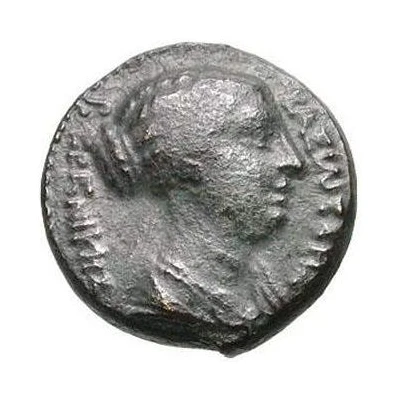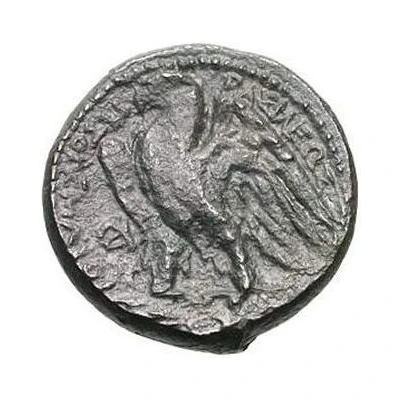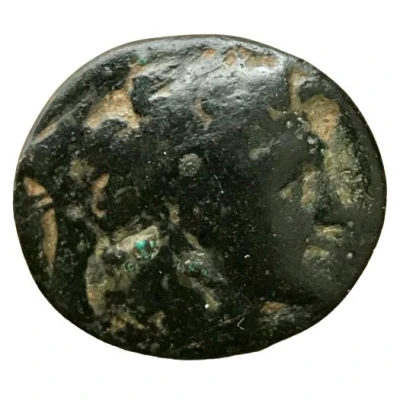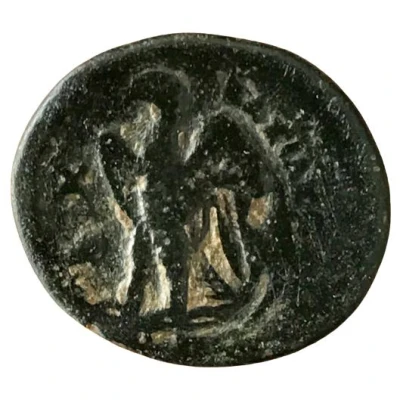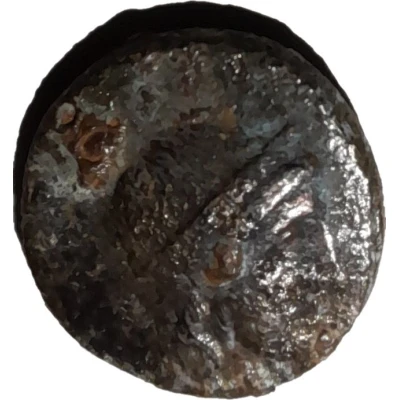
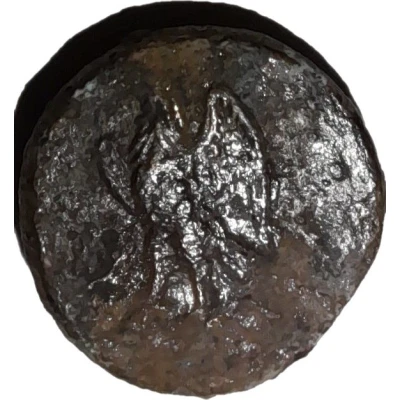

© pimmy (CC BY-NC-SA)
Hemiobol - Ptolemy I Soter 305 BC - 282 BC
| Bronze | 3.8 g | 18 mm |
| Issuer | Ptolemaic Kingdom (Ptolemaic Kingdom (305 BC - 30 BC)) |
|---|---|
| King | Ptolemy I Soter (305 BC - 282 BC) |
| Type | Standard circulation coin |
| Years | 305 BC - 282 BC |
| Value | Hemiobol (1⁄12) |
| Currency | Attic drachm (circa 323 – 306 BC) |
| Composition | Bronze |
| Weight | 3.8 g |
| Diameter | 18 mm |
| Shape | Round (irregular) |
| Technique | Hammered |
| Orientation | Variable alignment ↺ |
| Demonetized | Yes |
| Updated | 2024-10-09 |
| Numista | N#345259 |
|---|---|
| Rarity index | 95% |
Reverse
Eagle with spread wings standing left on thunderbolt.
Script: Greek
Lettering: ΠTOΛE
Unabridged legend: Πτολεμαίος
Translation: Ptolemy
Comment
Aphrodite portrait issues ca. 310 - 305 BC, some catalogs list these as struck after 296BCHemiobol Sv79; Lorber B119 - Aphrodite wearing Stephane, open-wing eagle, at left Partial legend: PTO & no control symbols
Hemiobol Sv80; Lorber B123 - Aphrodite wearing Taenia, open-wing eagle, at left wreath control symbol
Hemiobol Sv81; Lorber B120 - Aphrodite wearing Taenia, no wreath
Stephane is a wreath-like headdress
Taenia is a ribbon-like headband
Since headdress is a distinguishing feature among these types and they are very close in design, they are often confused and thus presented together on this one page. (For a much more elaborate Stephane, see Svoronos 74).
Interesting fact
The Hemiobol coin featuring Ptolemy I Soter is notable for its unique design, which includes an image of the king wearing a lion's skin headdress, symbolizing his role as a powerful and fierce leader.
